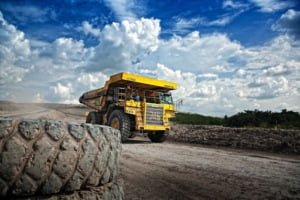The Role of Automation in Modern Mining Operations
Automation has become an increasingly important aspect of modern mining operations. As the industry strives for greater efficiency, safety, and productivity, the integration of advanced technologies and automated systems has become essential. The implications of automation reach far beyond the mining sites themselves, affecting equipment suppliers, workers, and the industry at large. To better understand the role of automation in modern mining operations, it is important to explore its evolution, benefits, and challenges, as well as its impact on the workforce and equipment suppliers.
Evolution of Automation in Mining
Mining has come a long way since the days of manual labour and pickaxes. Over time, advancements in technology have led to the development of increasingly sophisticated machinery and equipment, paving the way for the rise of automation in the industry. From the early days of remote-controlled equipment to the present-day use of artificial intelligence (AI) and machine learning, mining has evolved into a highly automated process.
The adoption of automation in mining has been driven by several factors, including the need to improve safety, reduce environmental impact, and enhance productivity. Additionally, as mining operations delve deeper into the earth and access more remote locations, automation has become crucial in overcoming the challenges of these environments.
Benefits of Automation in Mining Operations

Automation offers numerous benefits to mining operations. One of the most significant advantages is improved safety. By minimizing human involvement in hazardous tasks and working conditions, automated systems can greatly reduce the risk of accidents and injuries. This not only protects workers but also helps companies avoid costly downtime and potential legal issues associated with workplace accidents.
Increased productivity and efficiency are also key benefits of automation. Automated systems can operate around the clock without the need for breaks, allowing for continuous production. Moreover, advanced technologies, such as AI and machine learning, can optimize processes by analyzing data and making adjustments in real-time, leading to more efficient operations and higher output.
Cost savings and optimization are further advantages of automation. Although the initial investment in automated systems can be high, the long-term savings in labor, maintenance, and operational costs can more than offset these expenses. Additionally, automation enables better resource management, as equipment can be monitored and maintained more effectively, extending its lifespan and reducing the need for replacements.
Finally, enhanced data collection and analysis capabilities provided by automated systems can lead to valuable insights that drive better decision-making and inform future improvements in mining processes.
Types of Automation Technologies in Mining
There is a wide range of automation technologies currently employed in mining operations. Autonomous vehicles and equipment, such as trucks and drills, can perform tasks with minimal human intervention, improving efficiency and safety. Remote operation and control systems allow for the management of equipment and processes from a distance, reducing the need for workers to be physically present in hazardous environments.
Robotics and automated machinery can perform tasks that were once carried out by humans, such as drilling, blasting, and material handling, with greater precision and consistency. Artificial intelligence and machine learning applications can analyze vast amounts of data from mining operations to optimize processes, predict equipment failures, and inform decision-making.
Impact on Mining Equipment Suppliers
The rise of automation in mining has significant implications for mining equipment suppliers. As the demand for automated equipment grows, manufacturers must shift their focus towards the development and production of these advanced technologies. This presents opportunities for innovation and product differentiation, as suppliers strive to meet the evolving needs of mining companies.
Collaboration with technology providers is also becoming increasingly important for equipment suppliers, as partnerships can facilitate the development of cutting-edge solutions and help them stay competitive in the market. Additionally, adapting to changing customer needs and demands is crucial for suppliers to remain relevant in the industry.
Workforce Implications
Automation in mining has a profound impact on the workforce. As automated systems take over tasks previously performed by humans, the demand for certain skill











